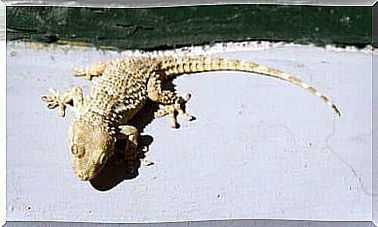Dental Implants For Dogs: What You Need To Know

When it comes to taking a pet to the dentist, many people are often puzzled. On the contrary, veterinary dentistry is a specialization that is becoming established in many countries, such as England and the United States. And, in addition to basic therapies and care, dental implants for dogs are also becoming increasingly popular.
Currently, these types of interventions are considered aesthetic procedures within canine dentistry. But using these implants can have very positive effects on chewing and, consequently, on digestion.
To learn more about the advantages and disadvantages of these dental implants for dogs , do not miss the following article.
What are dog dental implants?
Dental implants for dogs serve the same purpose as those for people. It involves replacing a damaged, lost or missing piece of teeth. The dentist will replace the tooth (s) with an artificial implant that will be adjusted for permanent function.
Before fixing the artificial tooth in its corresponding position, the dentist will have to insert a titanium screw. This element will act as the basis for the support of the new tooth (a kind of ‘artificial root’). Then, the ceramic coated outer piece will be screwed and seated on the animal’s gum.
It is worth clarifying that the grafting of these artificial parts is completely painless for the animal. The procedure is performed under general anesthesia; it is a question of preserving its well-being and ensuring the safety of placement.

When are dog dental implants needed?
Dental implants are recommended for all dogs who have lost one or more teeth. However, the feasibility of the procedure in each animal will first need to be investigated by a veterinary dentist, especially when dealing with older dogs with more delicate health conditions.
To check the dog’s overall and dental health, the vet may request clinical tests and x-rays of the teeth and gums. From these analyzes it will be possible to verify the real state of the animal’s teeth.
Before inserting an implant, the practitioner must verify that the bone structure of the mouth is able to support the artificial part. In some cases, a bone mass graft may be used to obtain an optimal surface for the implant.
Chewing is the first stage of digestion, as it allows you to start assimilating proteins and fiber molecules. Therefore, it can be said that dental implants in dogs are functional and go beyond a simple aesthetic improvement.

Benefits of Dog Dental Implants
In recent times, several scientific studies have been carried out on the use of these systems. We looked at how dental implants affect the quality of life of pets. As we will see, the benefits for the life of the dog are truly remarkable.
Experts point out that the greatest benefit of dog dental implants is to avoid bone loss in the jaw. When the animal loses a tooth, this “free” space generates a compensatory contraction of the bone. And, in the face of the loss of two or more teeth, the damage to the bone mass can become irreparable.
The absence of teeth could also significantly impair the digestion of your beloved pooch. Do not forget that a complete set of teeth is essential to ensure optimal chewing and subsequent assimilation of the nutrients present in food.
On the other hand, the tongue of dogs that lose their teeth is usually much more exposed. In addition to being something unpleasant, from an aesthetic point of view, the body could be more easily infected by external pathogens.
Some specialists say that dogs’ self-esteem is also improved. This statement makes sense but lacks scientific evidence, among other things due to the difficulty of measuring the psychological impact of toothlessness in canines .
Conclusion
Dental implants for dogs are a great way to improve chewing. And also to prevent the weakening of the bone structure of their mouth. In addition, they can have a positive impact on their social life and their self-esteem.
However, this procedure can be quite expensive and its long-term impact on the dog’s quality of life has not yet been sufficiently studied.









